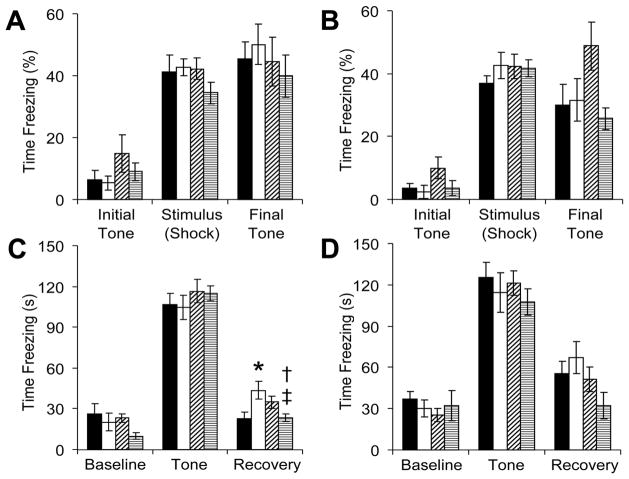Figure 4.
Adult mice that received neonatal saline or leptin underwent fear conditioning (■: control-saline, n=9 male, 10 female; □: GR-saline, n=15 male, 8 female; ▨: control-leptin, n=14 male, 9 female; ▤: GR-leptin, n=15 male, 6 female). On the initial training day, male (A) and female mice (B) were presented with a repetitive tone that co-terminated with a mild electrical stimulus, and fearful behavior (freezing) was digitally captured. The following day, male (C) and female mice (D) were presented with an unpaired cue (tone) in a novel context. The post-cue freezing of male mice was influenced by a significant interaction between neonatal growth and leptin administration (C; F(1,49)=11, *P<0.05 versus control-saline, †P<0.01 versus GR-saline, ‡P<0.05 versus control-leptin). In female mice, neonatal leptin administration tended to decrease overall post-tone freezing (D; F(1,29)=3.8, P=0.06).

